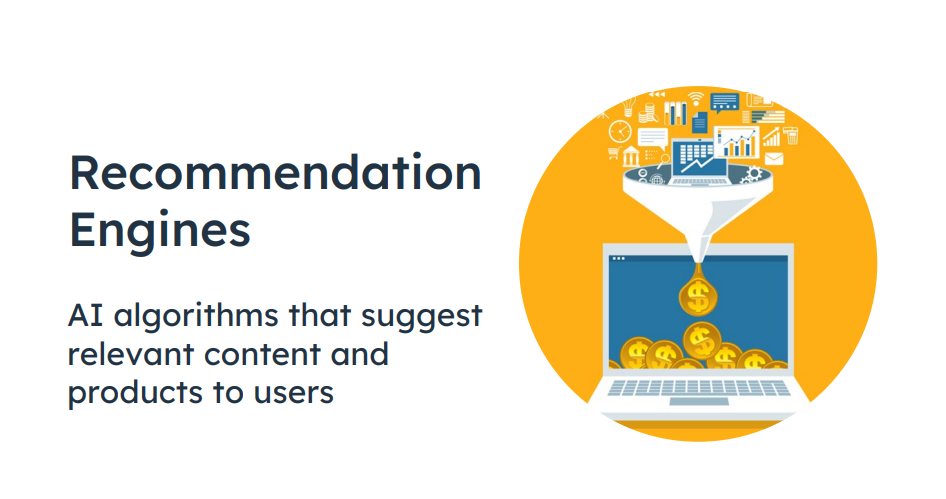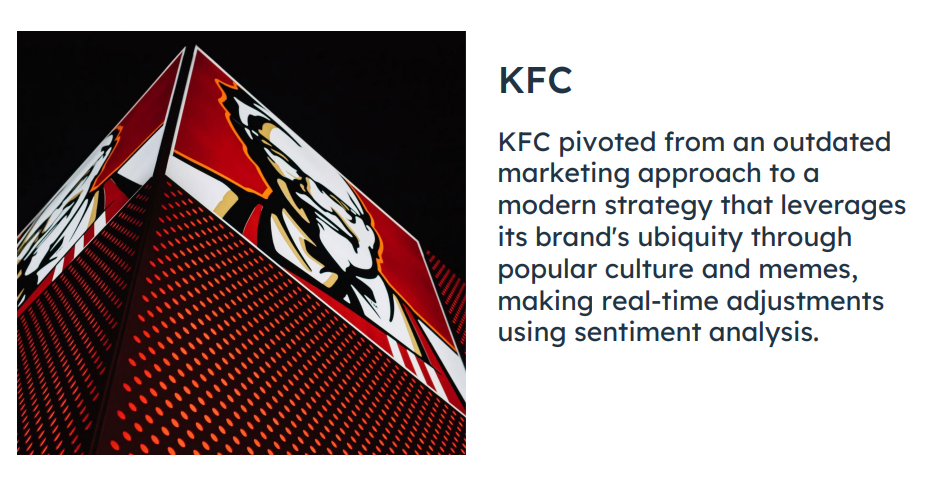Artificial intelligence is changing the field of marketing in important ways. AI models, computer programs that learn from data, are systems designed to analyze information and find patterns that can help automate tasks like making predictions, decisions, and recommendations. These models are developed by training them on vast amounts of data, and they continuously improve their performance as they receive new information. Their ability to continuously learn is revolutionizing how artificial intelligence can help businesses, and industries across the board are now benefiting as AI models take on more complex roles.
Let’s explore some of the most popular AI models marketers are leveraging today.

Chatbots are one of the most common applications of AI in marketing. Chatbots are AI programs that can have text or voice conversations with customers. Chatbots can answer common questions, provide product recommendations, schedule appointments, and even complete transactions. For example,

Sephora implemented three successful chatbots as part of its marketing strategy. A Kik chatbot provides beauty tips and product info. The Sephora Reservation Assistant helps users locate stores. The Virtual Artist bot on Facebook Messenger matches makeup colors to user photos. These chatbots have increased booking rates by 11%, lifted average purchase value to $50, and drove 600,000 interactions. Chatbots save time for customers and provide instant brand interactions.

Recommendation engines are AI algorithms that suggest relevant content and products to users. These models are trained on large datasets of user behavior and preferences. For instance, Netflix and Amazon use recommendation engines to suggest movies and products based on what a user has watched or purchased.

Recommendation engines allow marketers to provide personalized product suggestions at scale. They increase cross-sell opportunities. Online styling service Stitch Fix leverages data science and algorithms to provide customers with personalized clothing recommendations. By collecting over 90 data points on customer preferences and feedback, Stitch Fix trains machine learning models to predict products each user will enjoy. The company also uses an algorithm called Style Explorer to discover new styles customers will like before shipping items. With this AI-powered approach, Stitch Fix has achieved success matching customers to clothing in a customized way not possible through traditional shopping.

Predictive lead scoring uses AI to determine which leads are most likely to convert to sales. The models analyze leads’ behaviors like email opens, clicks, and site visits. It also assesses firmographic data, like company size and industry. Leads are automatically given a score indicating sales readiness.

Predictive lead scoring improves sales efficiency. Sales reps know which leads to prioritize for contact. Marketing and sales can also adjust campaigns based on lead scores. TeamBuilding is a company that experienced tremendous growth in lead generation during the pandemic. By employing a lead scoring system, the TeamBuilding team effectively pinpointed promising leads and applied marketing automation to simplify their lead management procedures. TeamBuilding’s results extended beyond merely expanding their sales team; they also experienced a remarkable threefold increase in monthly revenue.

Sentiment analysis uses natural language processing to determine the sentiment or tone behind text. This technique analyzes conversations on social media, product reviews, support tickets, and other sources to classify sentiment as positive, negative, or neutral.For example,

KFC pivoted from an outdated marketing approach to a modern strategy that leverages its brand’s ubiquity through popular culture and memes. By doing so, KFC created a natural connection with its audience, strengthened by the power of pop culture. Users engaged with the brand, which ultimately led to increased interaction with the products. Sentiment analysis played a crucial role in KFC’s strategy by allowing them to quickly respond and adapt their content based on consumer sentiment.

Computer vision AI enables brands to identify and understand objects in visual media for marketing purposes. For example, visual recognition can detect brand logos and products within social media imagery to evaluate engagement and brand awareness. Computer vision is also used in programmatic advertising to deliver highly targeted ads based on analyzing image content. For market research, this technology can identify in-store displays, shelves, and inventory availability to optimize retail marketing. Going beyond analysis, computer vision can also generate visual content through techniques like generative adversarial networks (GANS). Brands can leverage computer vision technology to produce original images and campaigns featuring synthetic models in a budget-friendly way.

Japanese company DataGrid uses a GAN to create realistic synthetic fashion model images for brands to use in campaigns and social media without constantly hiring new models. They created a digital Instagram model, Imma, who’s amassed nearly 400,000 followers with stylish selfies. Imma recently appeared in a makeup spread alongside real models for Kate Cosmetics in Japan.

Natural language generation (NLG) technology automates the creation of written content. NLG systems convert data into narratives that sound natural to human readers. The AI is programmed with rules that govern language structure, grammar, and style conventions.
NLG enables marketers to scale content production. Rather than manually writing repetitive content like earnings report summaries, financial news stories, and product descriptions, businesses can leverage NLG systems. This frees up time for more strategic initiatives. For example, the Associated Press uses NLG to automate quarterly earnings stories for thousands of companies.
These cutting-edge AI capabilities enable marketers to drive efficiency, personalization, and informed decision-making throughout the customer journey. As more innovative AI applications emerge, marketers must thoughtfully evaluate how these technologies can best serve their organization’s goals, audiences, and values.AI models



















